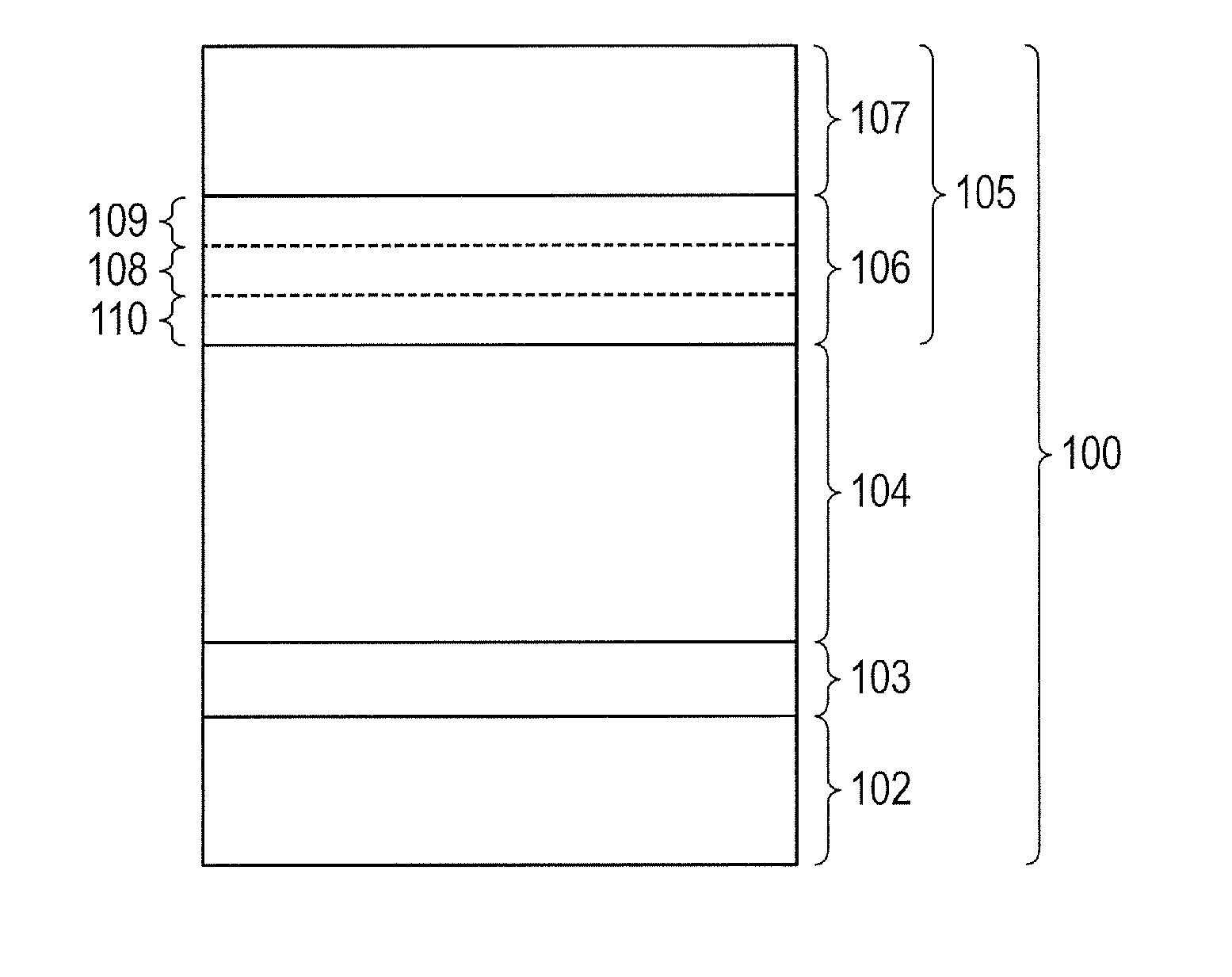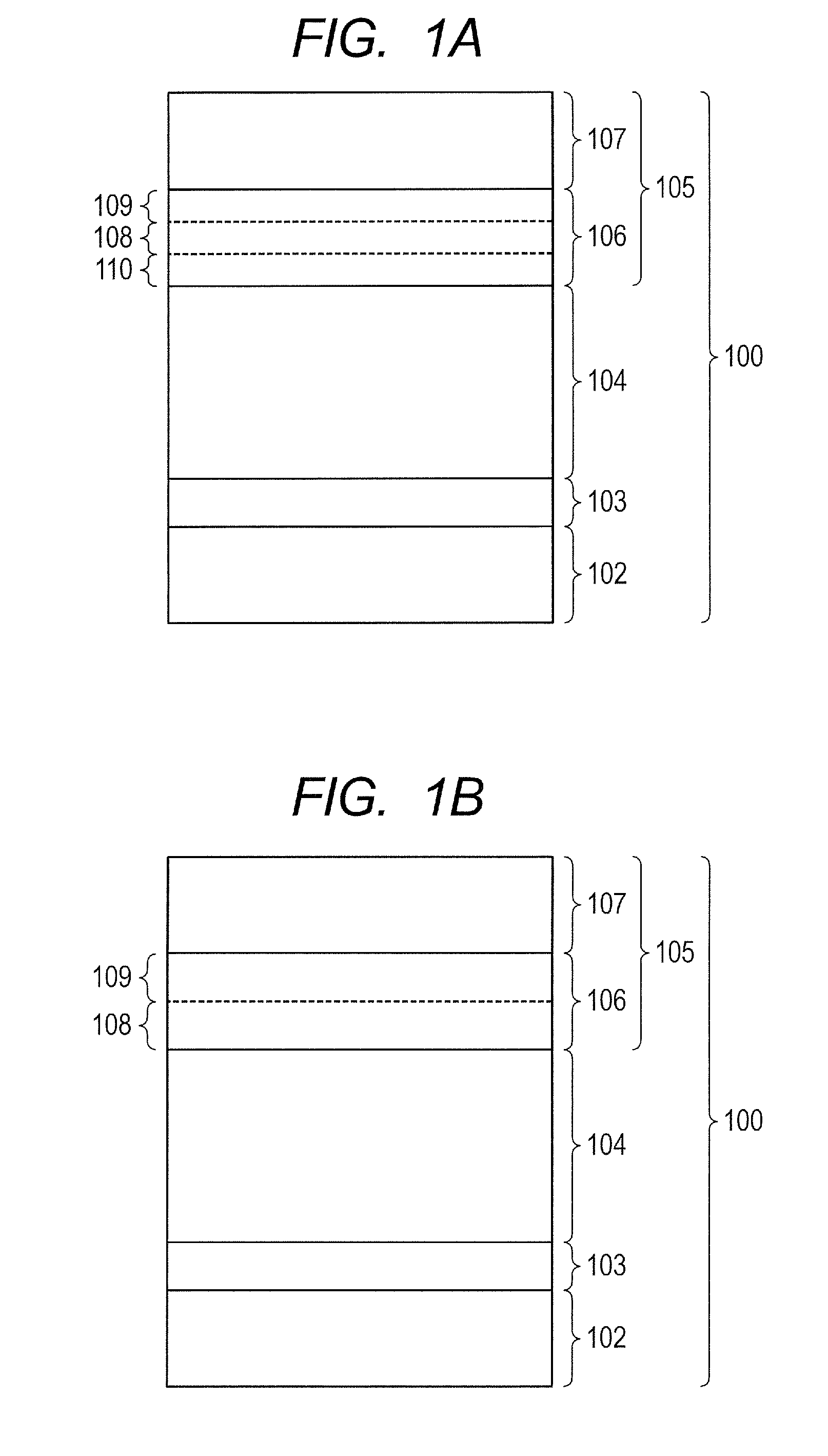Electrophotographic photosensitive member, method for manufacturing the same, and electrophotographic apparatus
- Summary
- Abstract
- Description
- Claims
- Application Information
AI Technical Summary
Benefits of technology
Problems solved by technology
Method used
Image
Examples
example 1
[0312]Layers illustrated in FIG. 1A and FIG. 1B were formed on the conductive substrates (substrates) 7112 which were made from aluminum and had a cylindrical shape with a diameter of 84 mm, a length of 381 mm and a thickness of 3 mm, with the use of the apparatus 7000 for forming a deposition film as illustrated in FIG. 7, on conditions shown in Table 1, and a cylindrical electrophotographic photosensitive member to be negatively electrified (a-Si photosensitive member) was manufactured.
[0313]The change region 106 was formed in the following way.
[0314]As shown in Table 1, a flow rate of SiH4 which was introduced into the reaction vessel 7110 was continuously changed from 100 [mL / min (normal)] to 90 [mL / min (normal), from 90 [mL / min (normal) to 75 [mL / min (normal)], and from 75 [mL / min (normal)] to 15 [mL / min (normal)].
[0315]At the same time, a flow rate of CH4 which was introduced into the reaction vessel 7110 was continuously changed from 25 [mL / min (normal)] to 55 [mL / min (normal...
example 2
[0340]An a-Si photosensitive member was manufactured with similar procedures to those in Example 1, except that conditions shown in Table 1 were changed to conditions shown in Table 5.
[0341]However, in the present example, the upper charge injection prohibiting portion 108 was formed in the following way.
[0342]In the conditions on which the change region 106 was formed, at the time when a flow rate of SiH4 which was introduced into the reaction vessel 7110 became 90 [mL / min (normal)] and when a flow rate of CH4 became 55 [mL / min (normal)], B2H6 was introduced into the reaction vessel 7110 for 60 seconds, and the introduction amount (flow rate) was increased from 0 ppm to 200 ppm with respect to SiH4. After that, a deposition film was formed while a flow rate of B2H6 was maintained at 200 ppm with respect to SiH4. After that, in the conditions on which the change region 106 was formed, at the time when the flow rate of SiH4 which was introduced into the reaction vessel 7110 became 75...
example 3
[0352]An a-Si photosensitive member was manufactured with similar procedures to those in Example 1, except that conditions shown in Table 1 were changed to conditions shown in Table 6.
[0353]However, in the present example, the upper charge injection prohibiting portion 108 was formed in the following way.
[0354]In the conditions on which the change region 106 was formed, at the time when a flow rate of SiH4 which was introduced into the reaction vessel 7110 became 90 [mL / min (normal)] and when a flow rate of CH4 became 55 [mL / min (normal)], B2H6 was introduced into the reaction vessel 7110 for 60 seconds, and the introduction amount (flow rate) was increased from 0 ppm to 200 ppm with respect to SiH4. After that, a deposition film was formed while a flow rate of B2H6 was maintained at 200 ppm with respect to SiH4. After that, in the conditions on which the change region 106 was formed, at the time when the flow rate of SiH4 which was introduced into the reaction vessel 7110 became 75...
PUM
| Property | Measurement | Unit |
|---|---|---|
| Fraction | aaaaa | aaaaa |
| Fraction | aaaaa | aaaaa |
| Fraction | aaaaa | aaaaa |
Abstract
Description
Claims
Application Information
 Login to View More
Login to View More - R&D
- Intellectual Property
- Life Sciences
- Materials
- Tech Scout
- Unparalleled Data Quality
- Higher Quality Content
- 60% Fewer Hallucinations
Browse by: Latest US Patents, China's latest patents, Technical Efficacy Thesaurus, Application Domain, Technology Topic, Popular Technical Reports.
© 2025 PatSnap. All rights reserved.Legal|Privacy policy|Modern Slavery Act Transparency Statement|Sitemap|About US| Contact US: help@patsnap.com



